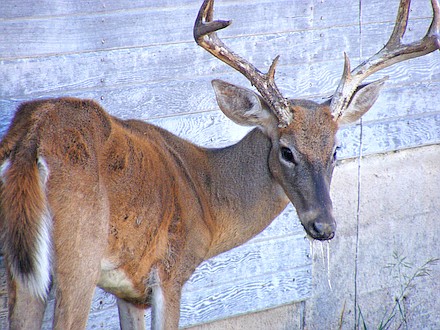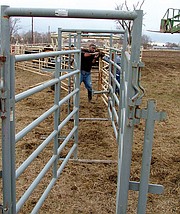As Callaway County deer hunters begin their fall season, they have one more thing to keep in mind. Callaway has this year been added to the list of 19 Missouri counties that are in Chronic Wasting Disease (CWD) management zones.
When the disease was first discovered in the state in 2010, the Missouri Department of Conservation (MDC) declared six counties in northeast Missouri a CWD management zone and began testing in the region in an effort to monitor the health of wild deer populations.
When additional CWD-positive deer were found, the zone was expanded by another five counties and strategies were implemented in hopes of containing the disease.
When a deer in Cole County tested positive in 2015, the department declared eight counties in central Missouri as a management zone as well.
"Hopefully, we have detected the disease early enough to minimize its impact on our deer populations," said Jason Sumners, resource scientist with the deer management and research program of MDC.
According to the Center for Disease Control (CDC), chronic wasting disease is classified as a transmissible spongiform encephalopathy (TSE), also known as a prion disease.
Simply put, CWD is a neurological wasting disease with symptoms that include weight loss, tremors, increased salivation and difficulty swallowing, which ultimately weakens animals to the point they can no longer forage or defend themselves. If they are not killed by hunters, predators or a kind-hearted soul putting them out of their misery, they will slowly starve to death.
Most people are familiar with prion diseases because of what was known as the Mad Cow (bovine spongiform encephalopathy-BSE) outbreak in Europe during the 1990s or because they are aware of a similar disease found in sheep known as scrapie.
First noted in deer populations in 1967 at a research facility in Colorado, CWD was subsequently found in mule deer in a facility in Wyoming and then in captive elk populations in both Wyoming and Colorado.
Because CWD is passed by direct contact or contaminated food and water sources, captive populations are most susceptible to infection. It is believed that when wild deer cross paths with captive populations (perhaps by a wild deer getting into a facility or a captive deer escaping) the disease moves outward from the point of contact, the natural ranging habits of non-captive deer spreading the disease through saliva, urine or feces.
The disease was first recognized in wild populations in 1981 when an elk was diagnosed in the vicinity of an infected captive population. By the mid-1990s, CWD was considered endemic to regions in northeastern Colorado and southeastern Wyoming.
In 2001, the first case of CWD found outside of the Colorado/Wyoming border region was reported in Wisconsin. According to a 2004 report by the CDC, the infected deer was found in an area near a captive deer farm that had animals infected with CWD. It was also reported that a previously captive white-tailed deer had escaped into the wild approximately seven months earlier.
The same report also stated, "because the distance from the CWD-endemic area of Colorado-Wyoming effectively precludes eastward migration of animals as a logical source of infection, CWD in Wisconsin was more than likely introduced by an imported infected cervid or some other source."
In 2001, amid growing concerns about CWD, the Missouri Department of Conservation began a targeted surveillance of wild deer populations by testing adult deer appearing to be in poor health. They also called on local deer hunters to voluntarily have their kills tested for CWD. From 2002 to 2004, close to 22,000 samples collected from every county in the state were tested. In subsequent years, MDC increased testing via hunter harvest, taxidermists and sick deer reported by the public.
The first infected deer found in Missouri was in a big game hunting preserve in Linn County in 2010. A second animal was confirmed in Macon County. In 2012, the first two wild, hunter-harvested, CWD-positive animals were found in northwest Macon County.
"People might confuse CWD with Hemorrhagic Disease (HD)," said Sumners. "But they are not the same."
According to Sumners, HD-also known as Blue Tongue-is a virus that makes deer sick, and can kill them, but not 100 percent of the time. Also, it is a seasonal illness due to being spread by midge flies. "It may take 30 percent of a population, but then it goes away," he said.
Conversely, when a deer is infected with CWD it is always fatal, and unchecked it can severely decimate populations. More troubling still is that once it is in an environment, it doesn't go away.
"The thing with CWD is that the prions are persistent. Once they are in an environment, nothing kills them, not the cold or heat or even cleansing agents (such as bleach)," said Sumners.


